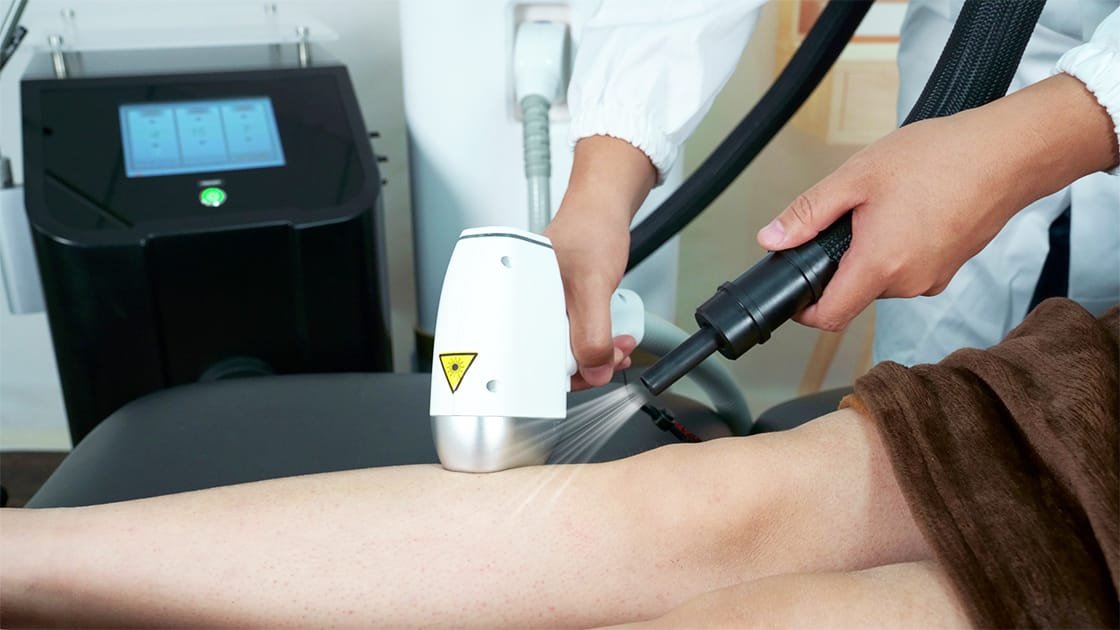When it comes to body contouring, two treatments often come up: traditional liposuction and laser lipolysis. Both aim to reduce fat and sculpt the body, but they work in different ways and offer distinct advantages. But which one is truly better? Let’s dive into the details and discover why laser lipolysis might be the ideal choice for many.
What is Traditional Liposuction?
Traditional liposuction is the tried-and-true method for fat removal. It involves a surgical procedure where a cannula (a thin tube) is inserted under the skin to physically suction out fat. This method is often used for larger fat deposits and is ideal for individuals seeking dramatic fat removal. While it can produce substantial results, traditional liposuction is more invasive, requiring general anesthesia and a longer recovery period. Swelling, bruising, and discomfort are common, and the procedure often leaves visible scars.
What is Laser Lipolysis?
Laser lipolysis, also known as laser liposuction, is a non-invasive alternative that uses laser energy to melt fat. A small laser fiber is inserted through tiny incisions in the skin, targeting fat cells. The heat from the laser liquefies the fat, which is then naturally absorbed and flushed out by the body. Laser liposuction has gained popularity due to its less invasive nature, faster recovery time, and added benefit of skin tightening. No need for general anesthesia—just local anesthesia and a relatively quick procedure.
Key Differences Between Laser Lipolysis and Traditional Liposuction
Fat Removal Method
Traditional liposuction relies on mechanical suction to remove fat, whereas laser liposuction uses laser energy to liquefy and remove fat. The key difference here is that laser liposuction allows for a more controlled, precise fat removal process with less disruption to surrounding tissues.
Precision & Targeting
One of the standout features of laser lipolysis is its ability to target specific problem areas with greater precision. The laser energy can be directed to smaller, more difficult areas, such as love handles or under the chin. In contrast, traditional liposuction often has a broader approach, which may not be as effective for precision sculpting.
A unique benefit of laser liposuction is the added skin-tightening effect. The heat from the laser stimulates collagen production, which helps tighten the skin after fat removal. This is particularly beneficial for patients looking for not just fat reduction but also improved skin elasticity. Traditional liposuction, on the other hand, does not provide this advantage and may leave skin sagging in some areas.
Scarring
Laser liposuction requires smaller incisions compared to traditional liposuction. These tiny incisions usually heal faster and leave less noticeable scarring. In contrast, traditional liposuction involves larger incisions, which may lead to more visible scars and a longer healing process.
Recovery and Downtime
Recovery time is one of the key differences between the two procedures. With laser liposuction, most patients experience less pain, swelling, and bruising, and can often return to normal activities within a few days. Traditional liposuction typically requires more downtime, with swelling and discomfort lasting for weeks. The procedure also often involves a more extended period of post-operative care, such as wearing compression garments.
Pros and Cons: Which One is Better?
Laser Liposuction Advantages:
Less invasive: Minimal downtime and no general anesthesia.
Skin tightening: Heat from the laser tightens the skin, improving appearance.
Precision: Laser technology allows for more targeted fat removal.
Fewer side effects: Less swelling, bruising, and scarring.
Traditional Liposuction Advantages:
Larger fat removal: More effective for patients needing significant fat reduction in one session.
Ideal for higher BMI: Suitable for those with larger fat deposits.
Drawbacks of Laser Liposysis:
Not for large volumes: Less effective for removing large amounts of fat in one session.
Multiple sessions required: Larger treatment areas may need more than one visit.
Drawbacks of Traditional Liposuction:
Invasive: Requires general anesthesia and involves surgery.
Longer recovery: Increased bruising, swelling, and a lengthy recovery period.
Higher risk: More potential for complications like infection or fat irregularities.
Conclusion
While both traditional liposuction and laser lipolysis have their benefits, laser liposuction is often the preferred choice for those seeking a minimally invasive, precision-driven, and faster-recovery procedure. With advantages like skin tightening, reduced scarring, and minimal downtime, laser liposuction is a game-changer in body contouring.
If you’re considering laser liposuction, the PowerSculp 1064nm Laser Lipolysis System could be the perfect solution. This advanced technology offers precision, efficiency, and excellent results, helping you achieve the body you desire with minimal recovery time. Explore the future of body contouring with PowerSculp, and experience the benefits of cutting-edge laser technology today.







